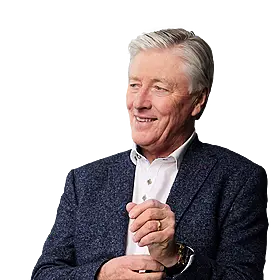Ireland has finally joined CERN as an associate member, opening the doors of the world’s biggest scientific instrument to Irish researchers for the first time. And what a machine to step into. This week, Professor Luke takes us deep inside the Large Hadron Collider — the 27-kilometre, super-cooled, magnet-driven particle racetrack buried under the Franco-Swiss border, where protons are hurled around at 99.99991% of the speed of light and slammed together to reveal the hidden architecture of reality itself. It’s a place colder than outer space, powered by magnets a hundred thousand times stronger than Earth’s gravity, and fuelled by Einstein’s famous equation, E = mc², made real at staggering energies.
Luke revisits the extraordinary discovery of the Higgs boson in 2012 — the so-called “God particle” that explains why anything in the universe has mass in the first place. He shares the joyful chaos of that summer, including the fact that the announcement itself was made in Dublin at a conference he chaired, months before Peter Higgs shared the Nobel Prize for the theory he first proposed back in the 1960s. And in classic Luke fashion, he uses a couple of gloriously groan-inducing Higgs jokes to explain what the particle actually does.
There’s plenty of Irish flavour threaded through the science too. The very word “quark” comes from Joyce’s Finnegans Wake. The first particle accelerator ever built was constructed by Irish Nobel laureate Ernest Walton, and that original device now sits in the lobby of CERN like a relic from the dawn of the scientific universe. And Luke even finds time to salute Nick Cave, whose song about the Large Hadron Collider he reckons might be the greatest science song ever written.
With 23 member states, 17,000 scientists on site, €4.6 billion spent on building the LHC, and €1.2 billion each year to keep it running, CERN is a cathedral to curiosity — powered by collaborations, cold atoms, and a lot of superconducting metal. As Luke explains, the collider is now undergoing enormous upgrades that will push particle physics even further into the unknown, from micro black holes to new forces of nature.
It’s a reminder that when you smash particles together at nearly the speed of light, the universe doesn’t just give up its secrets… it gives up entirely new questions.
For topic suggestions or comments, email Luke at laoneill@tcd.ie.











